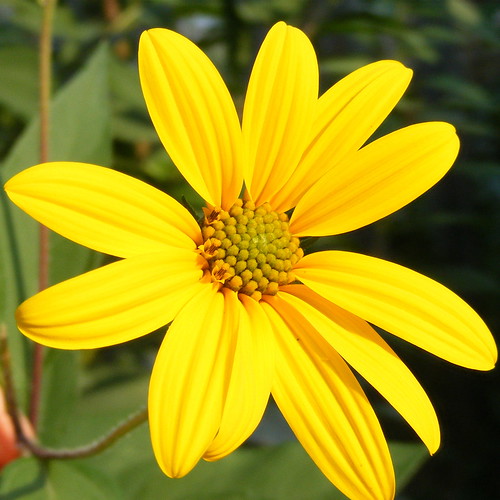 |
| "Sunchoke bloom" by renoir_girl |
The sunchoke is in the same genus as the sunflower, which you could guess by the picture at right. Unlike sunflowers, however, sunchokes have an edible tuber packed with the carbohydrate inulin. Inulin is a fructan (polymer of fructose molecules) that resists digestion. The fructose means it can be a low calorie sweetener and its polymeric nature places it into the fiber family. Another source of inulin is chicory root, which you will find at the top of the ingredients list of Fiber One bars.
Second, the globe artichoke (Cynara cardunculus var. scolymus). Did you know it's a thistle?
 |
| "Artichoke plant" by Miran Rijavec |
The artichoke's nutritional selling points include vitamin C, magnesium, and folate, as well as a healthy dose of fiber. Ocean Mist would love for you to believe artichokes are an antioxidant powerhouse. I had difficulty deciphering the USDA article they cited, but certainly believe eating an artichoke now and then is a delightful and healthful experience.
* 50 points for anyone who can tell me what a French "earth apple" is.